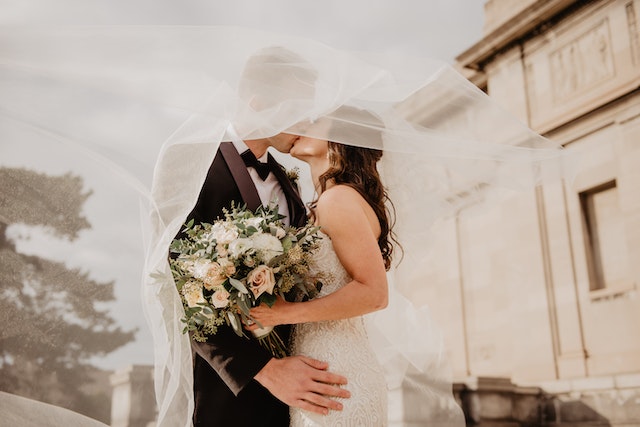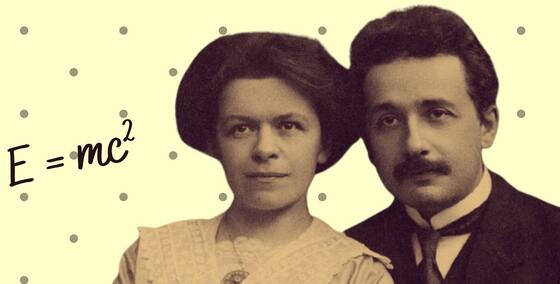Written by: Olivera Tolimir
It’s wedding season, and you got invited to a Serbian wedding for the first time! Congratulations, you’re up to a great night (and day, since Serbian weddings can start quite early)!
But what do we hear? You’re confused about the concept of a Serbian wedding and don’t know what to expect? Oh, you can expect all kinds of stuff, that’s for sure. Serbian weddings vary substantially depending on the region. Since the North part of Serbia (Vojvodina) is famous for its multiethnicity, you can expect mixed customs and a wedding with less old Serbian traditions. In Southern parts of Serbia, brides and grooms usually care more about performing typical Serbian ceremonies.
To not feel left out while everyone’s having great fun (and you have no idea what’s happening), check out these seven traditions you can expect at Serbian weddings.

Two Separate Gatherings
Most Serbian weddings start with one gathering at the groom’s house and another at the bride’s. Serbian weddings are usually large-scale (it’s common to have more than 200 guests). So, before the ceremony and the meeting at the restaurant, the bride and groom invite the closest people to their childhood homes. These gatherings start around noon or sometimes even in the morning.
There’s always music (usually a few musicians), drinks, and something for a snack.
Picking up the Bride / “Buying” the Bride
Before you become appalled and reject the invitation, don’t worry – no one is buying another human being.
Picking up the bride is the process of merging the two mentioned parties. The groom and his closest family, friends, and one and only godbrother (we’ll get to this – it’s a best man, but he holds much more significance than a regular best man once the wedding is over) go to the bride’s house.
They’re always loud and joyful and bring the musicians with them. So, now there’s the buying the bride tradition. Many young couples are cutting off this custom because of its roots.
Yes, once it was about buying the bride. It was expected for the groom’s brother to bargain with the bride’s brother. Once they’d agreed to the price, the bride would step out of her parents’ house, ready to get married.
Luckily, King Aleksandar Karadjordjevic brought the law in 1864 to forbid this custom because, as he explained, it went against human dignity. (Thank you, King Aleksandar!)
Today, this tradition is a fun outsmarting between the bride’s and groom’s brothers, godbrother, or uncles. Usually, the groom’s party would bring candy, fake money, or something similar. And if the bride’s side isn’t satisfied with the amount of candy, they sometimes bring out a man or another woman with a veil (or a curtain). Then, they pretend to try passing them as the bride. It’s the moment when everyone bursts out laughing. When the real bride comes out, it’s usually a very emotional moment for her, the groom, and their parents.
After that, the two groups dance and enjoy together for a little while. Then, they go to the church, city hall, or a restaurant, wherever the bride and groom intent to perform the wedding ceremony. Some couples opt to have both church and civil weddings, and some only the latter.
Shooting the Apple
Luckily, this is one of the traditions that is slowly being forgotten. The meaning behind it is nice, but you know, the safety…
Anyway, this is a Serbian custom according to which a groom should shoot an apple from the roof when coming to pick up the bride. He’s not allowed to pick her up until he does it because this way, he shows his skillfulness and determination to protect his future family.
Attaching Corsages

Another tradition you’re likely to see at a Serbian wedding is attaching corsages. If you’re invited to the bride’s house before the ceremony, you’ll see one or two young girls with two baskets next to them standing at the door. If you don’t go to the bride’s house, you’ll spot them at the restaurant’s entrance later. In one basket, you’ll notice a bunch of corsages, and in the other, money.
As soon as you enter the door, one of the girls will put a corsage on your wrist (if you’re a woman) or on your jacket (if you’re a man). In return, you’re supposed to put some money in their basket. The corsage girls should be the bride’s younger, unmarried cousins or friends.
It should be a symbolic amount of money, for example, 200 dinars (around two dollars). The girls pinning the corsages later share the collected money. So, if you’d like to make them happy, you’re free to put more money in the basket. The closer you are to the couple, the more money you should put in the basket (of course, no one will check, but it’s how it usually works).
Speaking of money, you should know that at Serbian weddings, the expected gift is in the form of a card with best wishes and money in it. The amount depends on your relationship with the bride and groom, but it should at least cover your “stolica” (chair). This means what they paid to the restaurant for the food and drinks, which are between 50 and 70 euros per person.
People very rarely buy presents nowadays. At the restaurant, you can eat and drink as much as you want. The bride and groom always cover that part, so you’re not supposed to spend money on anything except on the gift for the newlyweds and a symbolic amount for a corsage girl.
Best Man & Maid of Honor
Best man and maid of honor hold great significance in Serbian tradition. Interestingly, we use the same word for a godfather and best man, as well as for a maid of honor and a godmother. That’s why we used the word godbrother to explain the best man earlier. Also, bridesmaids and groomsmen aren’t a part of a Serbian wedding.
Best man and maid of honor aren’t crucial for legal reasons only (you can’t marry without two witnesses). At a Serbian wedding, these two roles are reserved for the closest friends. It’s a way of accepting your friends into the family, so we don’t choose our brothers, sisters, or cousins for these roles.
We like to say: Bog je na nebu, na zemlji je kum. It means: God is in the sky, and the godbrother is on land.
Photos at the Serbian Wedding
So, we finally arrived at the restaurant where the party’s starting! Don’t be surprised if the happy couple isn’t there yet. After the church and/or civil wedding(s), guests often go straight to the restaurant, find their seat (there will be a chart with enumerated tables and guests’ names at the entrance), order a drink and relax while enjoying the music.
The couple often decides to take their wedding photoshoot while the guests gather. When they arrive at the restaurant, someone will announce them, and they’ll dance their first dance (if they already had the civil wedding at the city hall), or have a wedding ceremony there, and dance after. The guests stand up and applaud while the newlyweds enter.

After the first dance, comes the least interesting part of every Serbian wedding: taking photos with the happy couple. We all want those photos, but it takes standing in line for some time or chilling around while the crowd clears. The newlyweds stand in front of the specially decorated part of the hall and pose for nearly an hour and a half. It’s exhausting, but what can you do? A few hours later, guests can buy those pictures right at the wedding (they’re 20 x more expensive than regular photos, but everyone buys them because they want a special memory from the wedding).
The Party & the Inevitable Kolo
When the photographing is over, the party can finally start!
At a Serbian wedding, always expect a band. Serbs never opt for a DJ for events like these. After a few hours of dancing, and at least 20 minutes of užičko kolo, comes the cake, and later, the party continues.
A modern Serbian wedding usually lasts until midnight or 1-2 am.
What did you like the most about a Serbian wedding? Is it different than a wedding in your country? If you’d like to learn more about Serbian customs, book your first private Serbian lesson!



